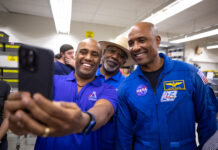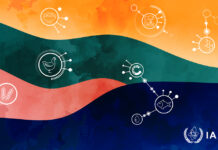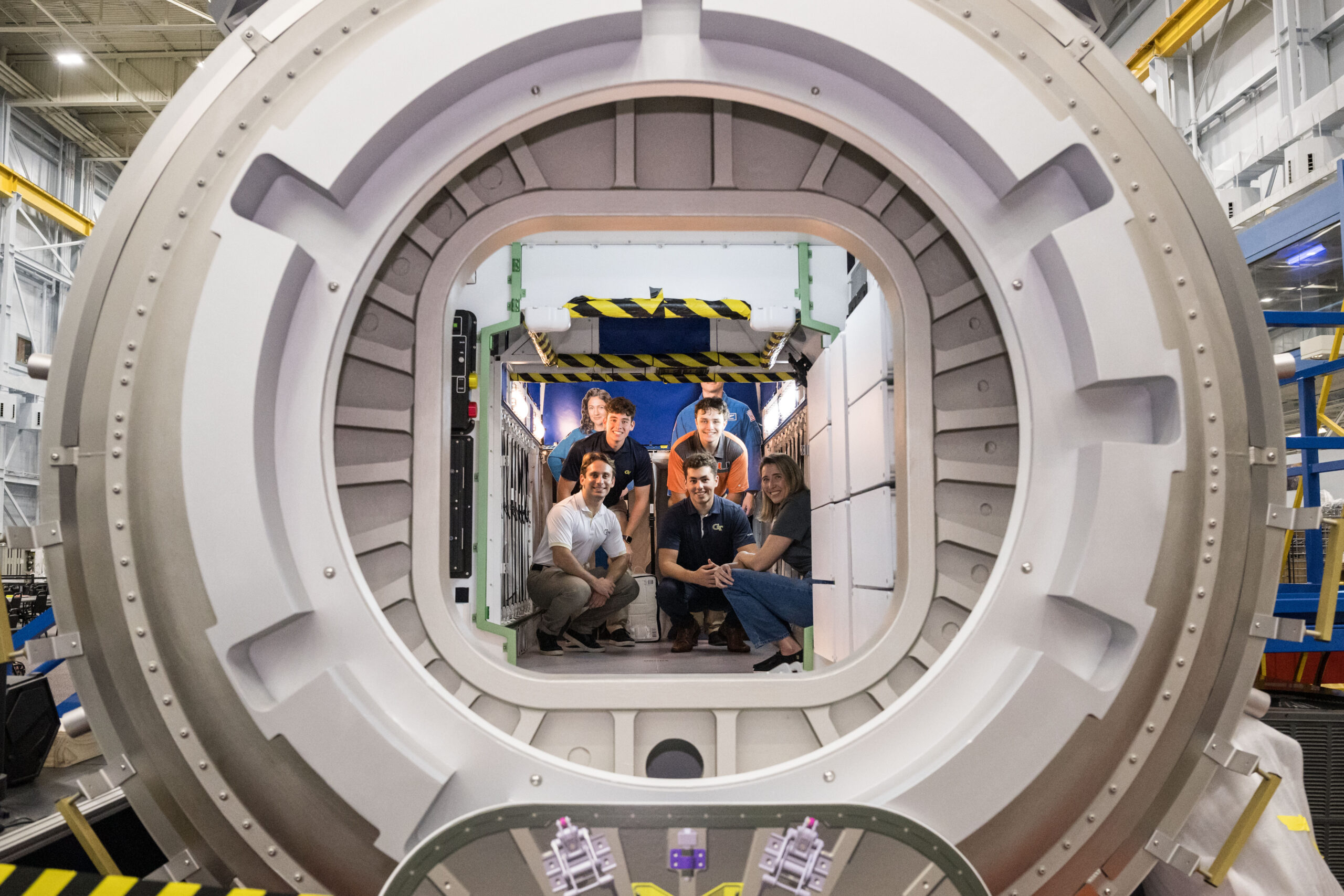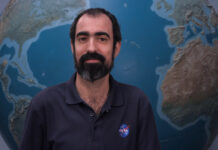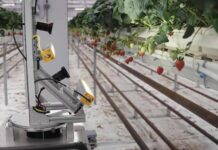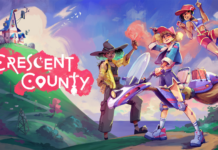On September 20, 2024, a remarkable opportunity unfolded for four students as they delved into the captivating realm of space exploration at NASA’s Johnson Space Center in Houston. This unique experience was part of an international competition that allowed their innovative work to be realized aboard the International Space Station (ISS).
Kibo Robot Programming Challenge: A Journey of Innovation
Now in its fifth year, the Kibo Robot Programming Challenge (Kibo-RPC) continues to expand the horizons of robotics, attracting the brightest young minds from around the globe. This competition serves as a real-world test of programming prowess, problem-solving capabilities, and innovative thinking.
The 2024 edition of the competition was particularly intense, with 661 teams comprising 2,788 students from 35 countries and regions around the world. These teams were tasked with programming robots aboard the ISS, providing a unique platform for students to showcase their skills on a global stage. The event was organized by the Japan Aerospace Exploration Agency (JAXA) in collaboration with the United Nations Office for Outer Space Affairs, highlighting its international significance.
Introducing Team Salcedo
Representing the United States in this prestigious competition was Team Salcedo, a group of four exceptionally talented students: Aaron Kantsevoy, Gabriel Ashkenazi, Justin Bonner, and Lucas Paschke. Each team member brought distinct skills and perspectives, contributing to a well-rounded and effective approach to the challenge.
The team’s name honors Dr. Alvaro Salcedo, a dedicated robotics teacher and coach who significantly influenced the academic paths of Kantsevoy and Bonner during their high school years. Dr. Salcedo inspired them to pursue careers in science, technology, engineering, and mathematics (STEM) fields, leaving a lasting impact on their aspirations.
- Aaron Kantsevoy: A computer science major at the Georgia Institute of Technology (commonly known as Georgia Tech), Kantsevoy led the team with his extensive experience in Kibo-RPC and a keen interest in robotics and space-based agriculture.
- Justin Bonner: As a second-year student at the University of Miami, Bonner is pursuing a triple major in computer science, artificial intelligence, and mathematics. His quick problem-solving skills made him an invaluable strategist and computer vision expert for the team.
- Lucas Paschke: A first-time participant and computer science student at Georgia Tech, Paschke focused on intelligence systems and architecture, bringing fresh insights to the team.
- Gabriel Ashkenazi: Also studying computer science at Georgia Tech, Ashkenazi specialized in computer vision and DevOps, enhancing the team’s technical capabilities.
AstroBee: The Free-Flying Robot
In the 2024 challenge, students were tasked with programming AstroBee, a free-flying robot aboard the ISS. The goal was to navigate a complex course while capturing images scattered throughout the orbital outpost. For Team Salcedo, the pinnacle of the challenge was when their code was tested live on the space station.
AstroBee executed its commands in real-time, skillfully maneuvering through the designated course. This demonstration required precision, speed, and adaptability in the microgravity environment of space. Observing AstroBee in action aboard the ISS provided a rare opportunity for the students to witness the direct impact of their programming skills, adding an exhilarating layer to their experience and motivating them to refine their approach.
Overcoming Real-Time Challenges
Navigating AstroBee through the orbital outpost posed unique challenges for Team Salcedo. They needed to ensure that the robot could accurately identify and target images scattered throughout the station while minimizing the time spent moving between locations.
To achieve smooth rotations in the 3D space environment, the team used quaternions, a mathematical representation that prevented challenges like gimbal lock, which can hinder smooth camera movements. Additionally, they employed multithreading techniques to allow AstroBee to simultaneously process images and move to the next target. This optimization was crucial in the fast-paced environment of space.
The Power of Teamwork and Mentorship
Despite working across different locations and time zones, Team Salcedo managed to establish a structured communication system, ensuring seamless collaboration. Understanding each member’s workflow and adjusting expectations accordingly helped maintain efficiency even when setbacks occurred.
Mentorship played a pivotal role in their success. Kantsevoy specifically acknowledged Casey Kleiman, his first STEM mentor, who ignited his passion for robotics during middle school. The team also expressed gratitude to their mentors at Johnson Space Center, including NASA Program Specialist Jamie Semple, Education Coordinator Kaylie Mims, and International Space Station Research Portfolio Manager Jorge Sotomayer. These mentors provided guidance throughout the competition and supported the team’s efforts.
The team was given the opportunity to present their project to NASA employees, thanks to NASA’s Office of STEM Engagement. This experience demonstrated the collaborative spirit similar to that seen in NASA’s workforce, which relies on teamwork to achieve success in highly technical environments. Jamie Semple expressed hope that the skills and knowledge gained from this challenge would encourage the team to consider future careers at NASA.
Pushing the Boundaries of Innovation
The Kibo-RPC competition allowed Team Salcedo to experiment with innovative techniques, such as Slicing Aided Hyperinference. This approach involved dividing images into smaller tiles for more detailed analysis. While promising in detecting smaller objects, it proved too time-consuming under the competition’s constraints, offering valuable lessons about prioritizing efficiency in engineering.
For Team Salcedo, the challenge underscored the importance of communication, learning from setbacks, and the rewards of perseverance. Witnessing their code in action on the ISS highlighted the limitless possibilities in robotics and space exploration.
Inspiring the Next Generation
The Kibo-RPC continues to serve as a proving ground for future innovators, bringing together participants from diverse backgrounds to compete on a global platform. The challenge not only tested the technical abilities of students but also fostered personal growth and collaboration, setting the stage for the next generation of robotics engineers and leaders.
As Team Salcedo looks to the future, they carry with them the skills, experiences, and inspiration needed to push the boundaries of human space exploration. Jorge Sotomayer emphasized the significance of programs like Kibo-RPC in nurturing the next generation of explorers, known as the Artemis Generation. It is not far-fetched to envision one of these students one day walking on the Moon or Mars.
The winners of the competition were announced virtually from Japan on November 9, with Team Salcedo achieving an impressive sixth place finish. For those interested in witnessing the international final round event, it is available to watch here.
The journey of Team Salcedo in the Kibo-RPC competition exemplifies the potential of young minds when given the opportunity to innovate and solve real-world challenges. Their story is a testament to the enduring power of education, mentorship, and collaboration in shaping the future of space exploration.
For more Information, Refer to this article.

















